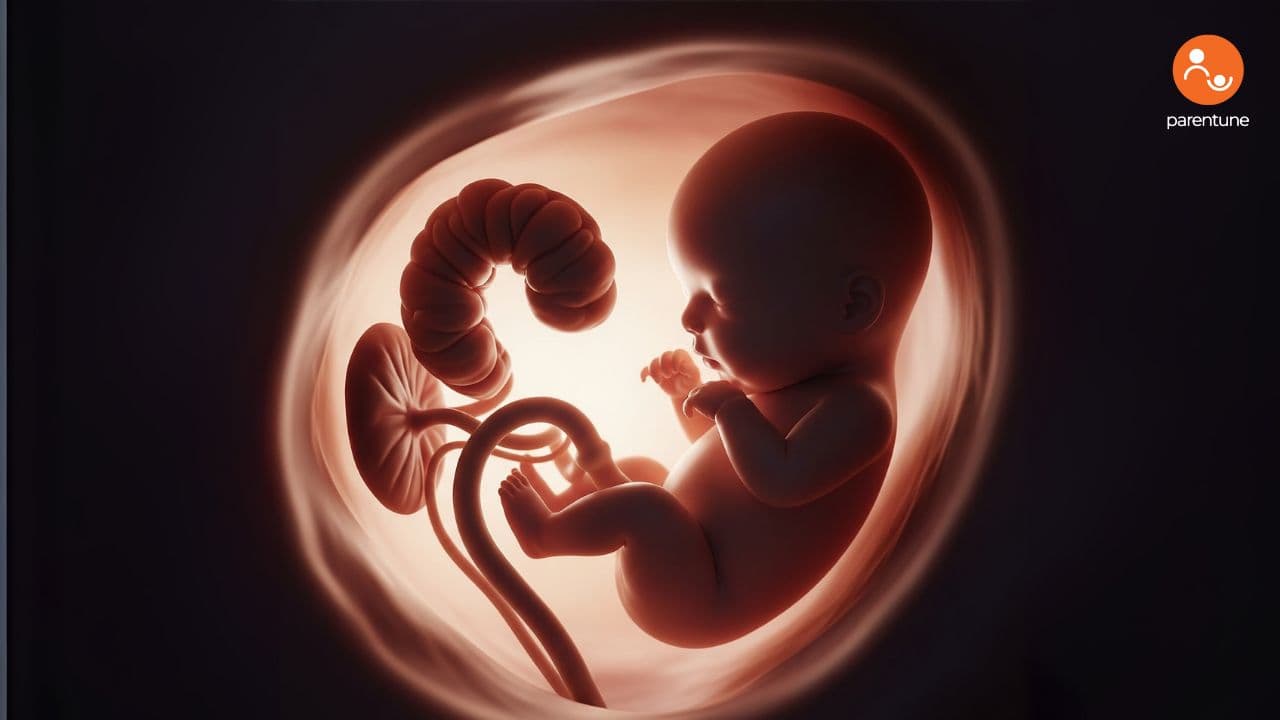pregnancy-by-week
How Do Babies Breathe In The Womb? The Fascinating Fetal Oxygen Process Explained

Published: 08/07/25
Updated: 08/07/25
Try holding your breath for just one minute.
Uncomfortable, right? Now imagine this: a baby in the womb doesn’t take a single breath through their lungs for nine whole months.
And yet, they thrive.
This isn’t a paradox. It’s a hidden system—an elegant workaround built by nature. Because breathing, as we know it, doesn’t begin until that first cry in the delivery room. But oxygen? That story starts much earlier.
Let’s unpack it.
Do Babies Breathe Inside The Womb? Not Quite—But They Do Get Oxygen
They don’t “breathe” the way we do.
There’s no inhale, no exhale. No air rushing through tiny nostrils.
Doctor Q&As from Parents like you
Instead, babies rely on a completely different mechanism—a life support system called the placenta.
The Placenta: Nature’s Oxygen Delivery Hub
Think of it as the baby’s personal oxygen concierge.
-
It forms in the uterus during early pregnancy
-
Connects to the baby via the umbilical cord
-
Acts as both lungs and digestive system, filtering nutrients and oxygen from the mother's blood
Your blood doesn’t mix with your baby’s. But the placenta ensures that oxygen molecules still make the leap—like passing notes through a membrane wall.
This transfer happens constantly. Quietly. Perfectly timed.
Read:
What Actually Happens Inside The Umbilical Cord?
The umbilical cord has three vessels:
-
Two arteries carry waste and carbon dioxide away from the baby
-
One vein brings oxygen-rich blood to the baby
This cord becomes a lifeline—literally.
Every time you inhale, you’re not just breathing for yourself. You’re breathing for two.
If The Baby Doesn’t Use Its Lungs, What Are They Doing?
Great question. The lungs are busy—but not breathing.
They’re practicing.
-
Around week 9, the baby begins making “breathing-like” motions
-
These aren’t breaths—they’re rhythmic diaphragm movements that help the lungs grow
-
The baby inhales and exhales amniotic fluid, not air
This prepares their chest muscles, airways, and nervous system for what’s coming: birth.
It’s like rehearsing the lines before the big play.
So, When Does Real Breathing Begin?
At birth. In a single, dramatic moment.
The First Breath: A System Overhaul in Seconds
As soon as a baby is born:
-
The umbilical cord is clamped
-
The placenta stops delivering oxygen
-
Carbon dioxide builds up, triggering the brain to respond
-
The baby takes its first gasp of air, usually followed by a cry

Within seconds, the lungs expand. The fetal circulatory system reroutes itself. And the baby goes from a passive oxygen receiver to an active breather.
It’s a biological gear shift so fast, it would make an engineer blush.
What Happens If Something Disrupts This Oxygen Transfer?
The womb is usually a safe, self-regulating environment. But disruptions can occur:
-
Placental insufficiency (not delivering enough oxygen)
-
Umbilical cord accidents (knots, compressions)
-
Maternal issues like smoking, high blood pressure, or anemia
In such cases, fetal distress may occur—detected via changes in heart rate or movements. That’s why regular prenatal check-ups and ultrasounds are vital.
Parentune’s expert blogs often walk parents through these risks—and how to interpret warning signs calmly and confidently.
You may also like to read:
Can A Baby “Drown” In The Womb?
This is a common fear. Let’s clear it up.
No, a baby cannot drown in the womb.
Why? Because there’s no air. No breathing. No lungs involved.
Drowning only occurs when air-breathing lungs fill with liquid. But inside the womb, the lungs are already full of fluid—and that’s normal.
So rest assured: your womb is not a dangerous place. It’s a perfectly calibrated ecosystem.
How Does This Affect Cesarean Vs Vaginal Birth?
There’s an interesting detail here.
In a vaginal birth, the baby’s chest is gently compressed during passage through the birth canal. This pushes some fluid out of the lungs—making that first breath easier.
In a C-section, this doesn’t happen. That’s why babies born via cesarean sometimes need a little extra suctioning or assistance with their first breath.
It’s not a flaw. Just a different launchpad.
Why This Matters For You As A Parent
Understanding how babies get oxygen in the womb does more than satisfy curiosity.
It builds confidence.
-
You realize that your body is already doing incredible things
-
You gain insight into how every breath you take supports your baby
-
You appreciate the brilliance of fetal development—not as a mystery, but as a system
And that’s where Parentune comes in.
It’s not just a parenting platform. It’s a community where science meets support. Where facts meet feelings. Where you can ask, share, learn—and feel a little less alone in the journey.
Key Takeaways (For The Curious Parent In You)
-
Babies don’t breathe in the womb; they get oxygen via the placenta
-
The umbilical cord is the delivery channel, using three vessels
-
Lungs practice, but don’t function until birth
-
First breath begins at delivery, switching systems in seconds
-
Fetal oxygenation is delicate but well-engineered—routine prenatal care protects it
-
No, babies cannot drown in the womb
-
C-section vs vaginal birth has minor differences in how lungs clear fluid
Final Thought: The Invisible Work Of A Mother’s Body
You don’t feel it happening. You don’t see it on an ultrasound. But every day, your body is quietly orchestrating one of the most profound transitions in nature.
From water to air.
From womb to world.
And all you had to do... was breathe.
Be the first to support
Be the first to share
Related Blogs & Vlogs
No related events found.